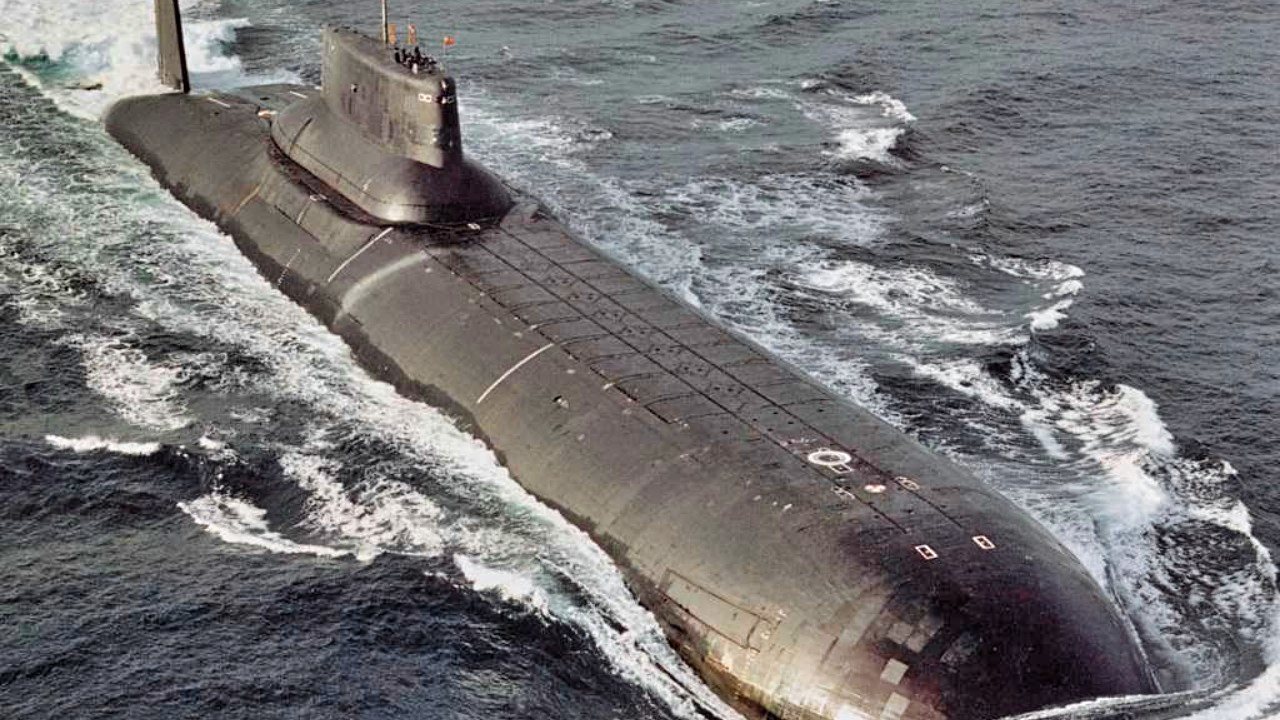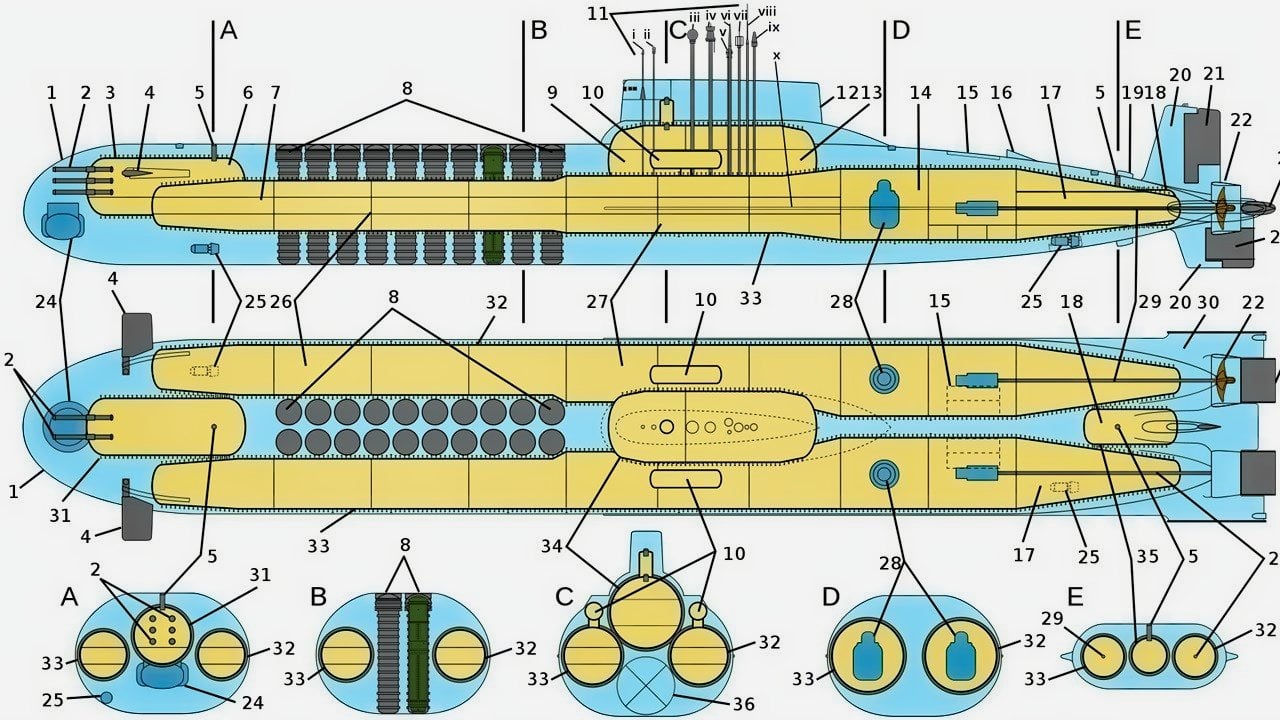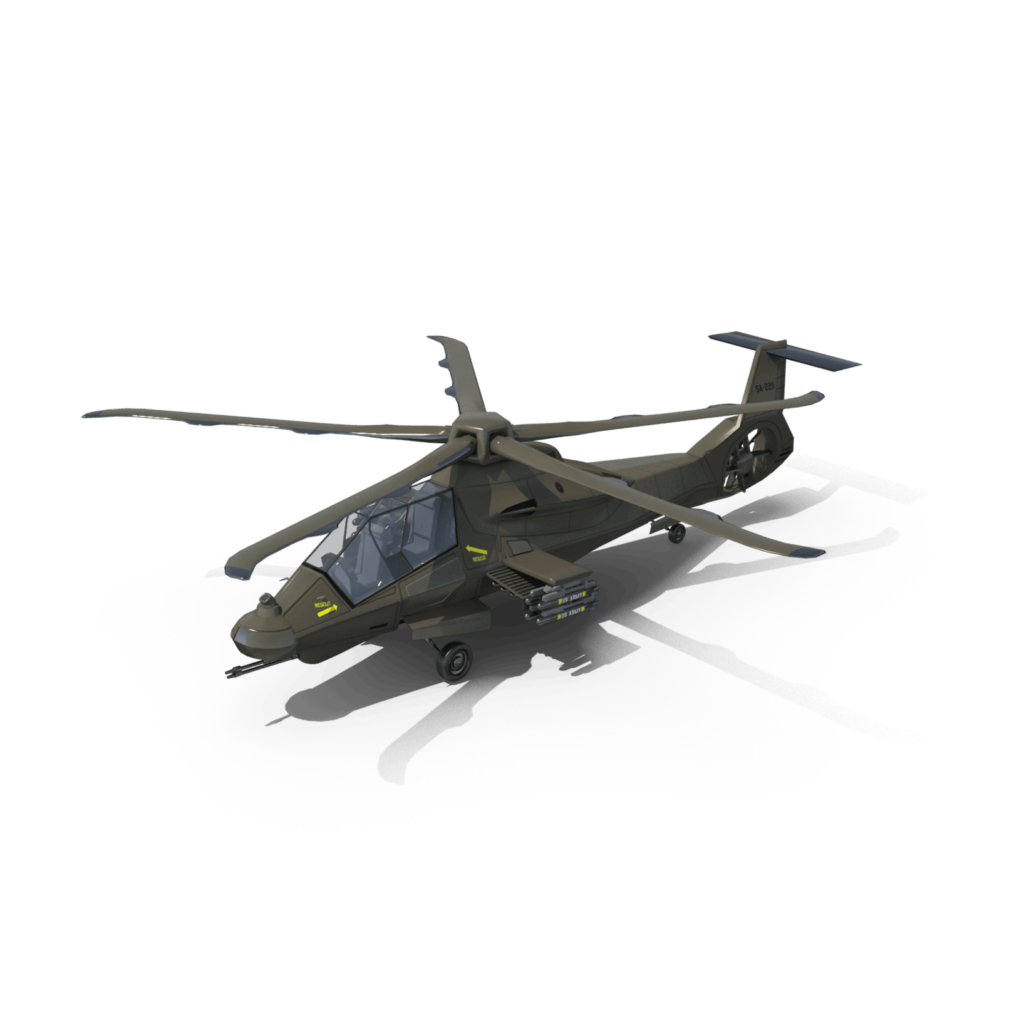
Typhoon-Class: Russia Built the Biggest Submarine Ever (It Had a Swimming Pool)
The Typhoon-Class, a Short History – Fans of The Hunt for Red October, whether the original bestselling novel by the late great Tom Clancy (R.I.P.) and/or the blockbuster film adaptation starring the late great Oscar winner Sir Sean Connery (R.I.P. again) are bound to be at least somewhat familiar with the massive Soviet-designed “Typhoon”-class killer submarine. The Typhoon-class boat also figures prominently in a lesser-known Clancy novel, SSN – co-authored with Martin Greenberg back in 2000 – wherein Mr. Clancy harped upon how difficult it would be to sink this particular make of Russian sub due to its double pressure hulls built of titanium. However, as fact-filled as Tom Clancy’s novels are, they’re still fiction, so now let’s take a deeper dive (yes, bad submarine pun intended) into the real facts and history of this submerged behemoth.
Typhoon-Class: The Soviets’ Whale Shark
The Soviets officially designated this ballistic missile submarine (SSBN) as Project 941 Akula (“Shark”), “Typhoon-Class” is the NATO codename. To make matters semantically more confusing – especially for submarine movie buffs – NATO for its part applied “Akula” as a codename for the different Soviet submarine class, the Project 971 Shchuka-B (“Pike”) nuclear hunter-killer submarine (SSN); just for clarification, it’s this latter type of “Akula” submarine that duels with the fictitious crew of the USS Alabama (SSBN-731) in the 1995 movie Crimson Tide starring Academy Award winners Gene Hackman and Denzel Washington. For additional differentiation, the Typhoon-Class is the older of the two classes, first built in 1976 whilst the “Pike” was first built in 1983.
Project 941 was designed as the successor to the Delta-class submarines (Project 667B series consisting of four variants). A total of six Typhoons were built between 1976 and 1989, with a seventh specimen planned but eventually canceled. It ended up as the largest submarine class ever built, tipping the proverbial scales at 48,000 tons worth of displacement. The submarine class is nearly two football fields in length at 174.9 meters (574 feet), the better to house its 160-man crew while staying submerged for up to 120 days at a time. The huge boats could plow through the water at a speed of 12-16 knots on the surface and 25-27 knots whilst submerged.
Weapons payload was impressive too: four 533mm (21-inch) torpedoes fore and two 650mm (26-inch) torpedoes aft, and most significantly, a capacity of 20 RSM-52 submarine-launched ballistic missiles (SLBMs). The Typhoons were built in response to the U.S. Ohio-class guided-missile submarines (SSGN), which weighed in at a mere 19,000-ton displacement. This greater than 2:1 size disparity is explained by my colleague Caleb Larson:
“According to the U.S. Naval Institute, this massive disparity in size between the American and Soviet/Russian missiles is due to the differences in plastics industry maturity, which in the United States, was able to create both plastic children’s toys, as well as important binders for solid-fuel missile components.”
Party Privileges?
Submarine duty is not for the faint of heart or the claustrophobic, as any submariner worth his/her salt knows. For American submariners, one of the big incentives in place to at least partially mitigate this hardship is what is reported to be the best chow in the U.S. Navy.

But the Soviet Typhoon/Akula took incentives and amenities to a whole ‘nother level, downright shocking for the military of a country that prided itself on supposed proletarian egalitarianism (not counting the “Do as we say, not as we do” Party privileges of the USSR’s elitist nomenklatura of course): not only a gym but a swimming pool and even a sauna. Mind you, the pools are only 2 meters (6.5 feet) deep and preclude diving and swimming laps, but eh, beggars can’t be choosers, especially when the host boat is submerged at the max depth of 500 meters.
The Typhoon-Class Headed for Retirement? Yes.
Alas, for aspiring present-day Russian submariners, the opportunities to enjoy these extra underwater perks are now over. Only one Typhoon/Akula remained on active service , that being the Dmitriy Donskoy (named for a 14th-century Prince of Moscow). She was recently scrapped.
About the Author
Christian D. Orr is a former Air Force officer, Federal law enforcement officer, and private military contractor (with assignments worked in Iraq, the United Arab Emirates, Kosovo, Japan, Germany, and the Pentagon). Chris holds a B.A. in International Relations from the University of Southern California (USC) and an M.A. in Intelligence Studies (concentration in Terrorism Studies) from American Military University (AMU). He has also been published in The Daily Torch and The Journal of Intelligence and Cyber Security. Last but not least, he is a Companion of the Order of the Naval Order of the United States (NOUS).
All images are Creative Commons.


